Bridging the Gap from Military to Civilian Life through the Arts
Key Takeaways from the 2025 National Convening of Community Engagement Grant Recipients
This article was written by Elizabeth Snell and Sarah Mote for the (External link)Mid-America Arts Alliance (M-AAA) website and republished here with permission.
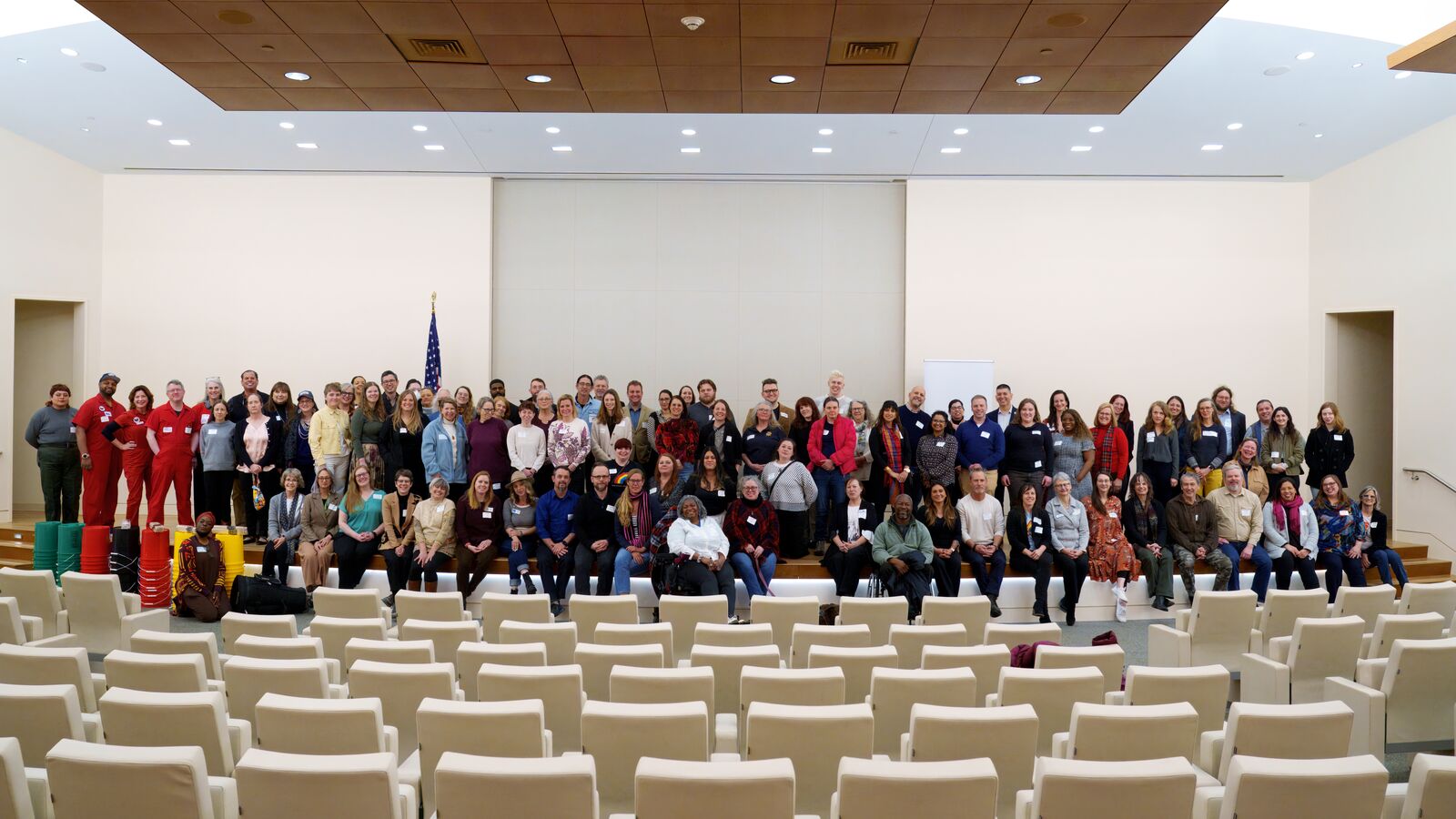
Last month, Creative Forces® Community Engagement grant recipients and leaders from across the nation filled the halls of the National Endowment for the Arts with energy, passion, and shared purpose.
It was the third annual convening—a powerful meeting of minds and hearts. Over 120 clinical art therapists, subject matter experts, program staff, and arts organizations serving military-connected communities throughout the country came together to share their stories. They also used this opportunity to envision an even bolder future for how the arts can support military-connected communities.
“It felt like being an indoor dog finally able to go to the park,” said Justin Hudnall of So Say We All in California, summing up the palpable energy in the room. For many attendees, the convening was a long-anticipated perk of the program, an opportunity for real, face-to-face connections and collaborations. It was a chance to see the vast, national scope of the work they were all contributing to—and to inspire one another.
What is Creative Forces?
Creative Forces®: NEA Military Healing Arts Network is an initiative of the National Endowment for the Arts in partnership with the Department of Defense and the Department of Veterans Affairs. It’s built on two pillars: placing creative arts therapies into clinical care and providing opportunities for community arts engagement, both important to supporting the well-being of military individuals, their families, and their communities. Mid-America Arts Alliance manages the latter in cooperation with the National Endowment for the Arts.
Art as a Bridge
The heart of the convening was to explore a powerful question: How can community arts engagement promote health, healing, and connection for military-connected populations? The answers emerged through shared stories, lessons, and moments of inspiration.
Particularly important to me was how participants highlighted how the experiences and needs of veterans are a resource for the rest of society to learn and benefit from through their creative expressions, not simply an ‘issue’ or ‘problem’ that creativity helps ‘solve.’
Andrew Colwell, Center for Traditional Music and Dance, New York
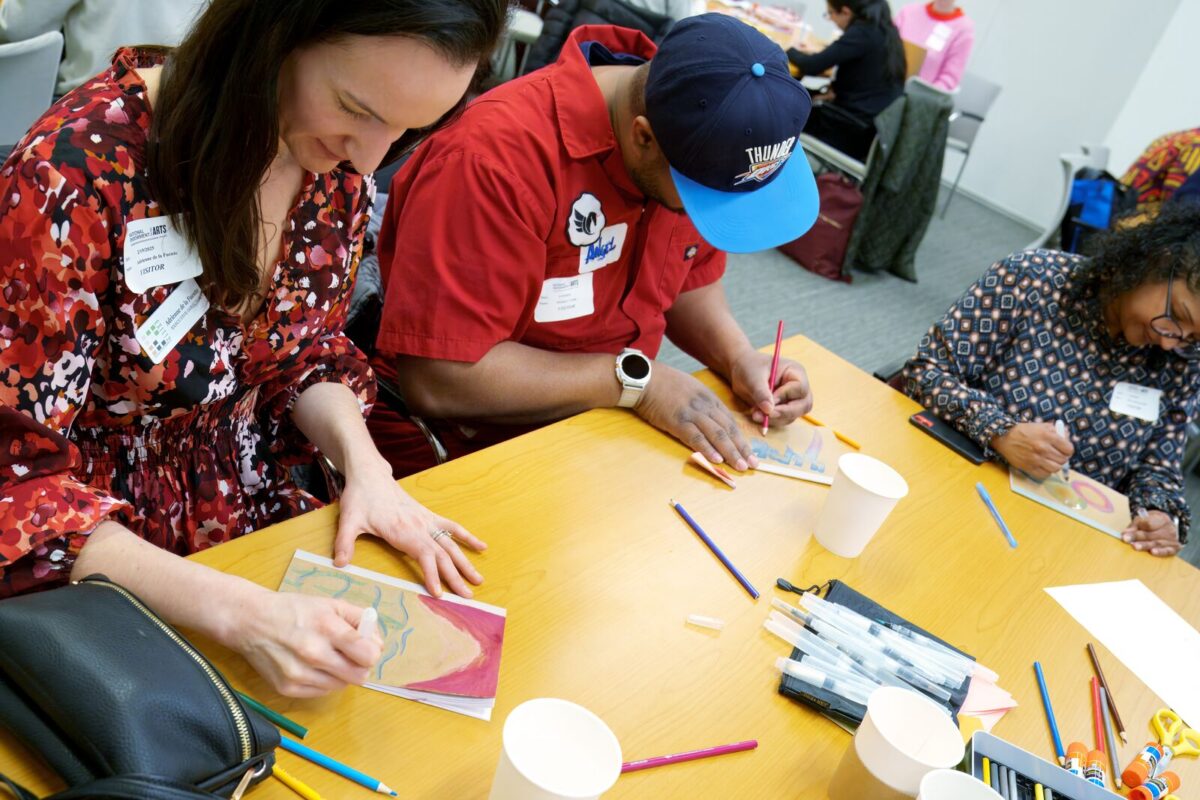
Workshops, panel discussions, performances, and arts engagements offered powerful insights into art, health, and community. Bryan Bales, a U.S. Marine Corps veteran and program manager at (External link)ArtsWa, presented a session called “Battlemind vs Homemind.” In his session, he illuminated the mental shifts required when transitioning between civilian and military life.
Presentations and workshops from Exit 12 Dance Company, SPARK! Creative Lab, Levoy Theatre, Mental Health Connecticut, Delaware Art Museum, Center for Traditional Music and Dance, Armed Services Arts Partnership (ASAP) and many more sparked crucial conversations about how art can bridge the cultural gap between those who serve and the communities where they return.
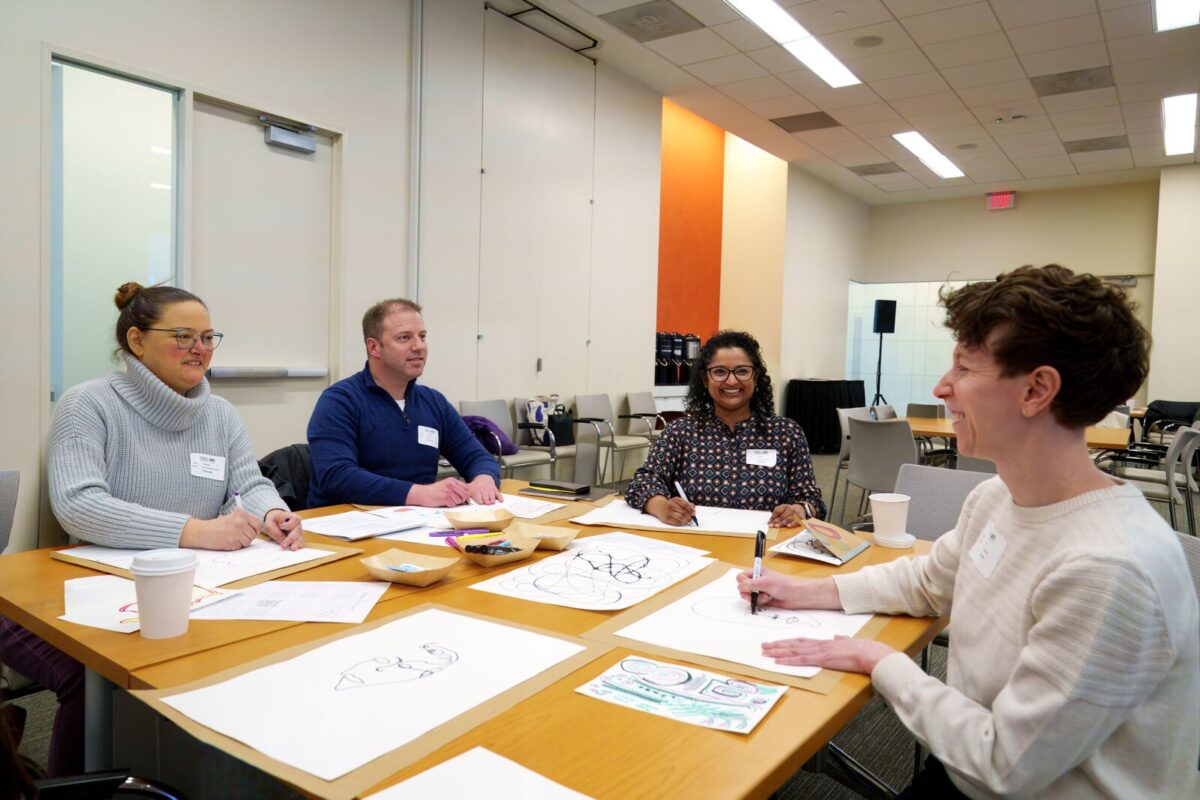
One of the most powerful takeaways for me was the recognition that veterans are not only participants in creative projects; they are essential collaborators and leaders in the work of building stronger, more connected communities. Their insights, resilience, and unique skill sets add depth and impact to artistic endeavors in ways that are transformative. The convening underscored that healing isn’t something we do for veterans—it’s something we create with them.
Brooke Poole, Spark! Creative Lab, Oklahoma
The Relevance of Art to Military Communities
“Art,” “military,” and “healing”—all these terms come with their fair share of assumptions, stereotypes, and yes, even exclusions. What do they really mean?
That question guided some deep rethinking of who we talk to, how we talk to them, how we create programs, and how we talk about this work in art, in health, and in service of military-connected individuals and communities.
For some in our military-connected communities, art can be dismissed as frivolous or “touchy-feely.” This stigma can prevent those who might benefit from creative expression from engaging with it.
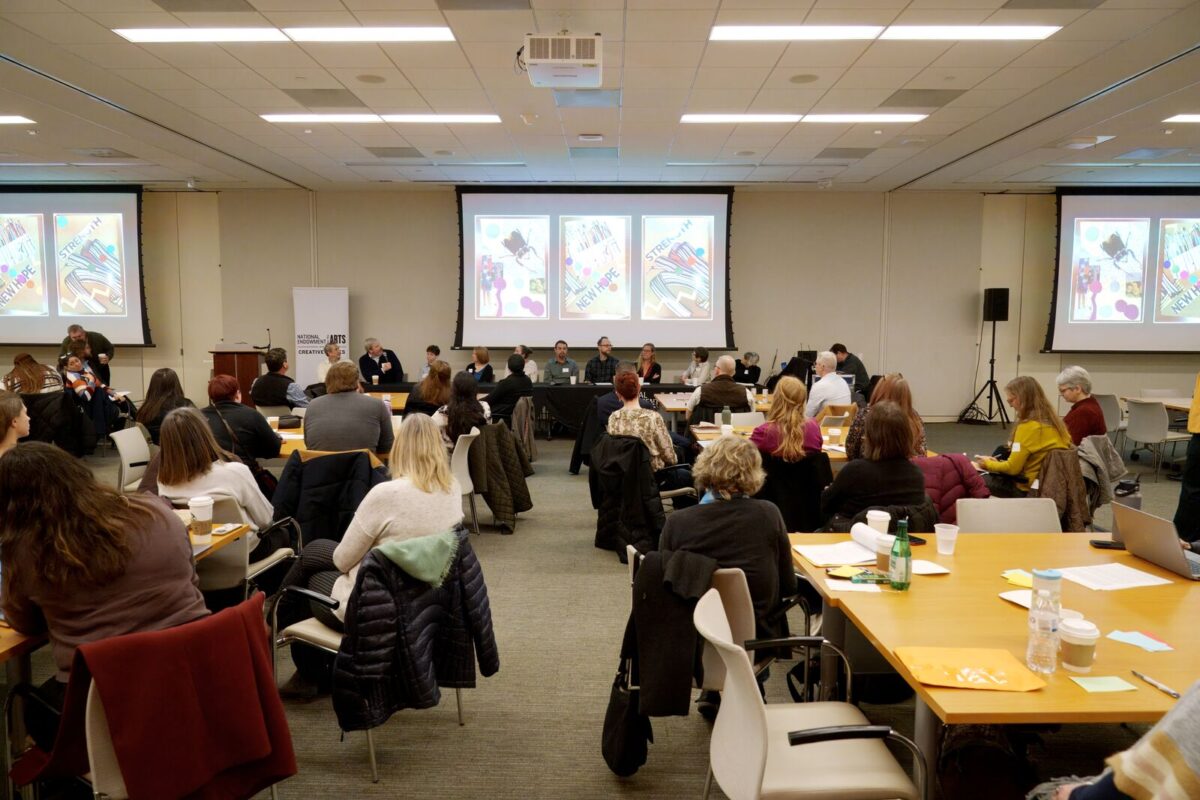
At this year’s convening, there was a fantastic discussion about the “healing” power of the arts. While there didn’t seem like there was much debate on whether or not engaging in the arts has the capacity to provide healing to an individual or a community, there was a multitude of ideas around whether audiences actually respond to that notion . . . What we learned is that there is no one correct way to address the notion of healing in the arts, but if you have an open dialogue with the people who participate in your programs, you’re on the best path.
Matt Aelmore, M-AAA Creative Forces manager
“Art is like broccoli.”
Artists and creatives might take a pause at that reduction. Broccoli? Really?
But that analogy offered by one Creative Forces grant recipient struck a chord, highlighting the cultural perception of art as a “nice to have” rather than a “need to have.”
Art is as integral to a healthy lifestyle as broccoli is…Art is need-to-have not a nice-to-have. All we are doing is giving people what they have been lacking.
Joe Hudak, So Say We All, California
The reality, however, is clear—creative expression is not a luxury.
Research and the experiences of people who engage in the arts—whether through music, painting, writing, or movement—have shown that the arts improve cognitive function, reduce stress, strengthen social bonds, and provide a means of self-expression that can be particularly valuable for those who have experienced trauma or isolation.
It’s time society recognizes art and creativity as critical to overall well-being, much like exercise or nutrition. It’s a lifeline. As M-AAA’s Creative Forces manager Matt Aelmore says, “Art is good for you.”
And if we accept that art is broccoli, something essential like exercise and nutrition, then we must ensure that everyone—especially military and their families—has access to it.
That means integrating creative programs into veteran centers, community colleges, and online spaces where military families already gather. It means shifting policies to include creative arts therapies within healthcare frameworks, much like exercise and nutrition are prescribed for overall well-being.
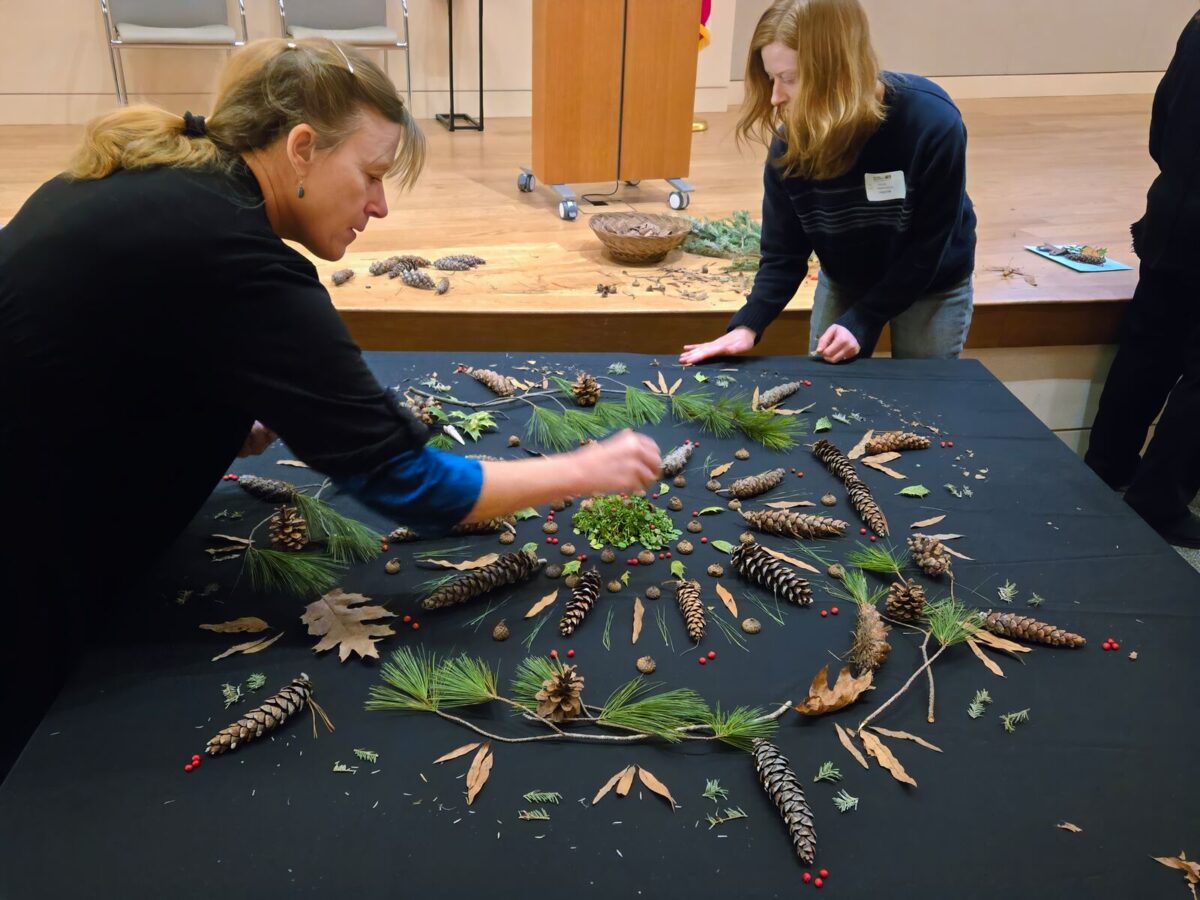
Storytelling without Exploitation
Another powerful conversation focused on how we tell stories about the military. Too often, the public narrative centers solely on trauma, reducing their identity to a singular experience of hardship rather than celebrating their resilience, creativity, and leadership. The convening challenged participants to flip the script.
How do we share the impact of the work, without exploiting those benefiting from it?
The answer lies in shifting the focus from trauma to transformation. Instead of marketing struggle and hardship, organizations were encouraged to focus on increased social connection, a greater sense of purpose, or the ability to articulate emotions in ways previously inaccessible—to highlight empowerment, growth, resilience, creative excellence, and community impact.
And of course, at the heart of this shift is ensuring that military participants maintain control and ownership over their stories—allowing them to choose how, when, and even if their experiences are shared.

An Opportunity to Build Together
As the convening came to a close, we felt a collective sense of responsibility. The messages were clear: the people we all serve with these programs aren’t just program participants. They are artists, leaders, and collaborators. Art is not a luxury; it is a fundamental need for individual and community well-being. And creative communities have a responsibility to expand access, shift narratives, and ensure that military-connected individuals are at the table—not as guests, but as partners.
I am so glad that I had the opportunity to be in the company of other providers and veterans before jumping into offering our program. I still feel somewhat naive serving this population, but I do feel much better informed than I did before attending the convening. It’s not any one conversation or presentation, but the accumulated impact of the entire experience that stays with me.
Erica Marks, Yew Mountain Center, West Virginia
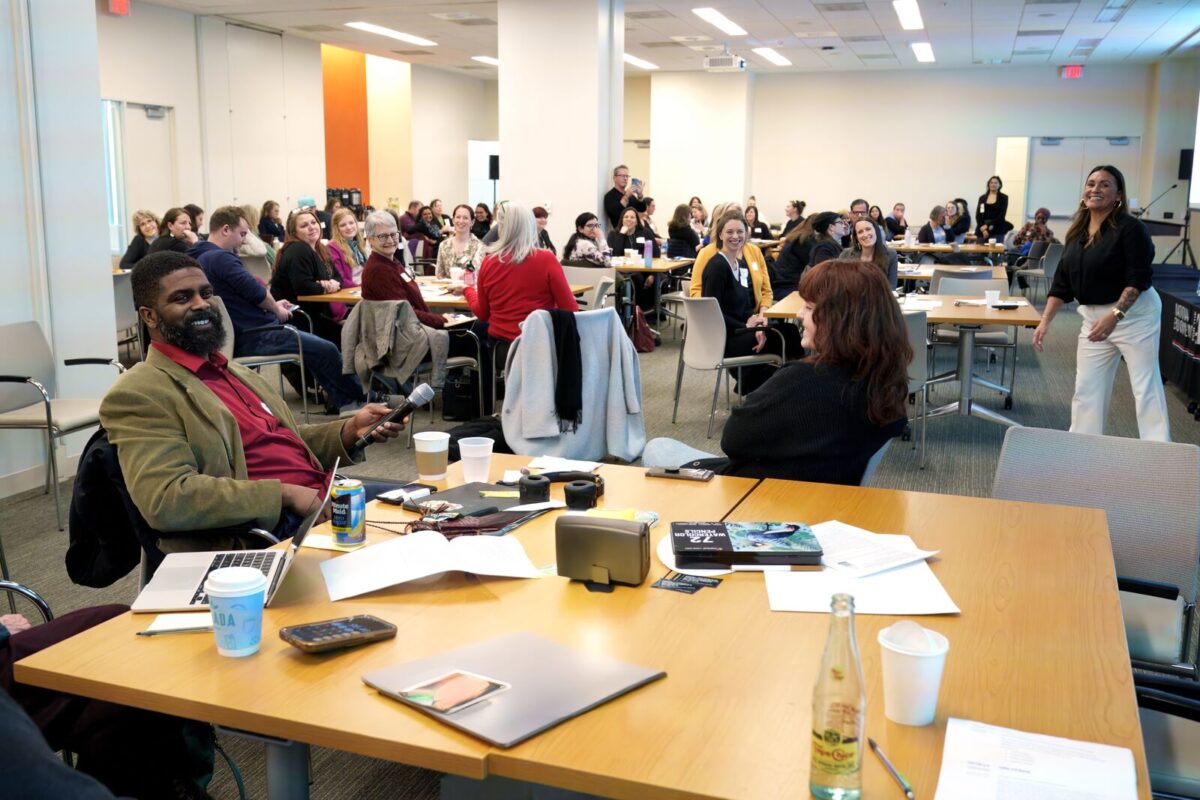
Thank you to the National Endowment for the Arts for hosting the convening, to the grantee organizations for sharing their work, and to all of the veterans and military-connected individuals whose creativity, resilience, and leadership remind us why we do this work. The Creative Forces convening was an inspiring and humbling reminder that art can change lives—and that change is already happening.
Now, go eat your vegetables.